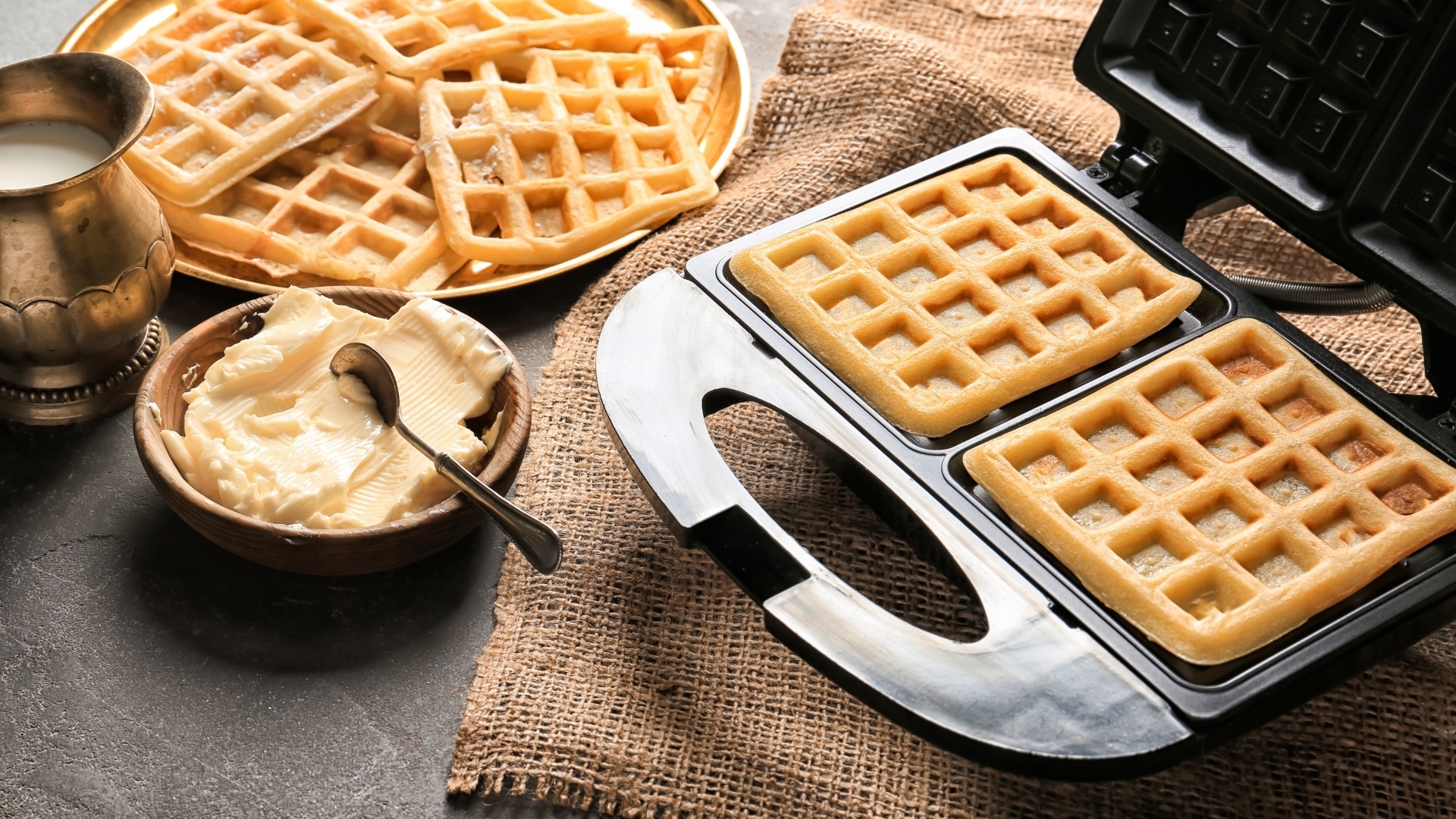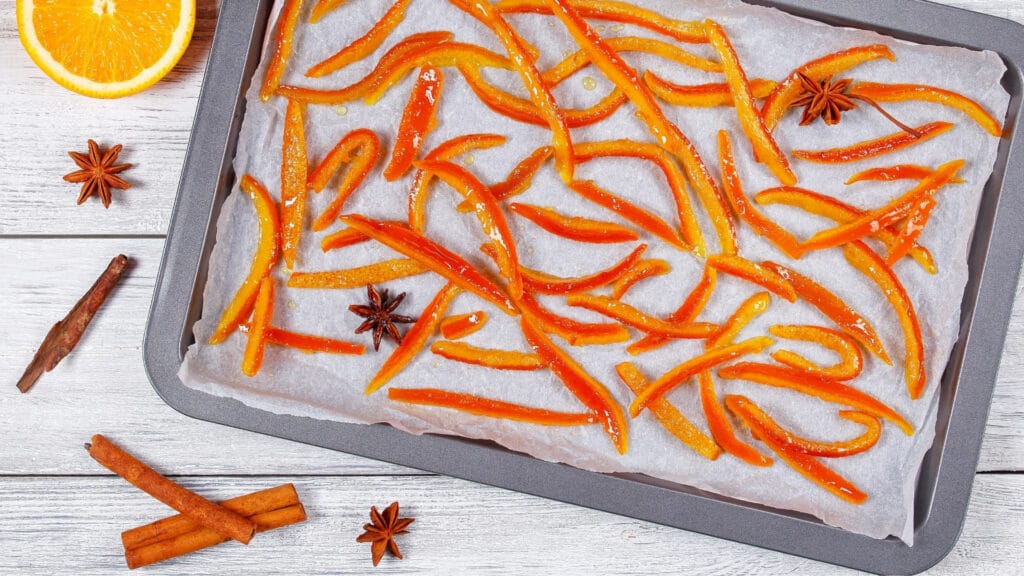What Kind of Spaghetti and Pasta Jar to Choose for Home
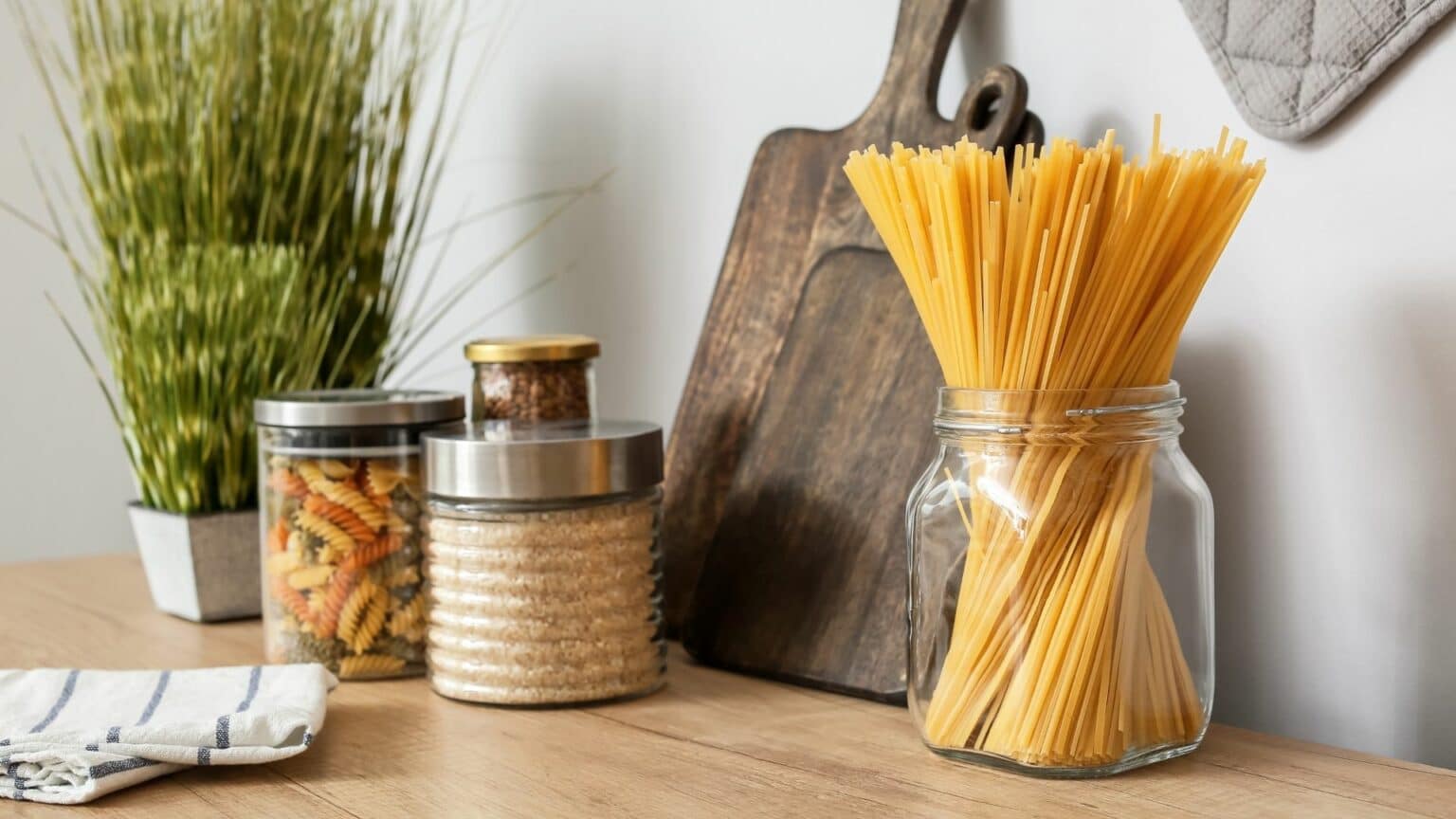
Last Updated: February 19, 2022
It’s no secret that America loves pasta. After all, our choices go beyond spaghetti and include noodles like fettuccine, linguine and rotini. Obviously, there’re many other countries with their own version of pastas; this variety is itself a proof of how people prefer to use them.
Every person has his/her own preference for what kind of spaghetti and pasta jar to choose for their homes depending on their personal preferences in terms of the amount of food they serve, their budget, and other factors as well. If you want to make sure that your pasta, spaghetti, and noodles are fresh and tasty for as long as possible, then you need the right kind of jar.
This is not only about getting quality food, but about protecting the food from high humidity, bugs, or breakage. There are many kinds of containers you can use, and you should choose them with the size of the pasta in mind.
If you want to use many kinds of jars, you will need plenty of space. The place where the jars will be stored should not be wet or dusty, so it is better to choose a dry place, such as a pantry or closet next to the sink.

The abundance of spaghetti and pasta jars in the market is truly mind-blowing. Different shapes, sizes, materials and designs exist for these products, making it near impossible for shoppers to find the best item that fits their needs.
Since this is such an overwhelming task for most people, it makes sense to arm yourself with information so you can make an informed decision whenever you take a trip to buy one of these tubs. However, if you are stuck with selecting which kind of spaghetti and pasta jar to get for yourself, then this guide will help you make a good choice.
Why Put Pasta in a Jar
Spaghetti, pasta and all other pasta products are made of flour. This means that they should be stored in a dry place, protecting them from pests – all kinds of bugs and their larvae, which you can bring from the store with other products. The flour moths get into the bags of flour and pasta, especially if you leave these foods for some time without using them.
They lay eggs on it and soon you will have an infestation. They are very destructive, eating as much as they can, damaging the food and leaving their poop around it that looks harmful to your health. Essentially, the main enemies of pasta are moisture and pests. In both cases, if this food is not adequately protected, there is a possibility that it will be ruined. Insects are a real problem in food storage.
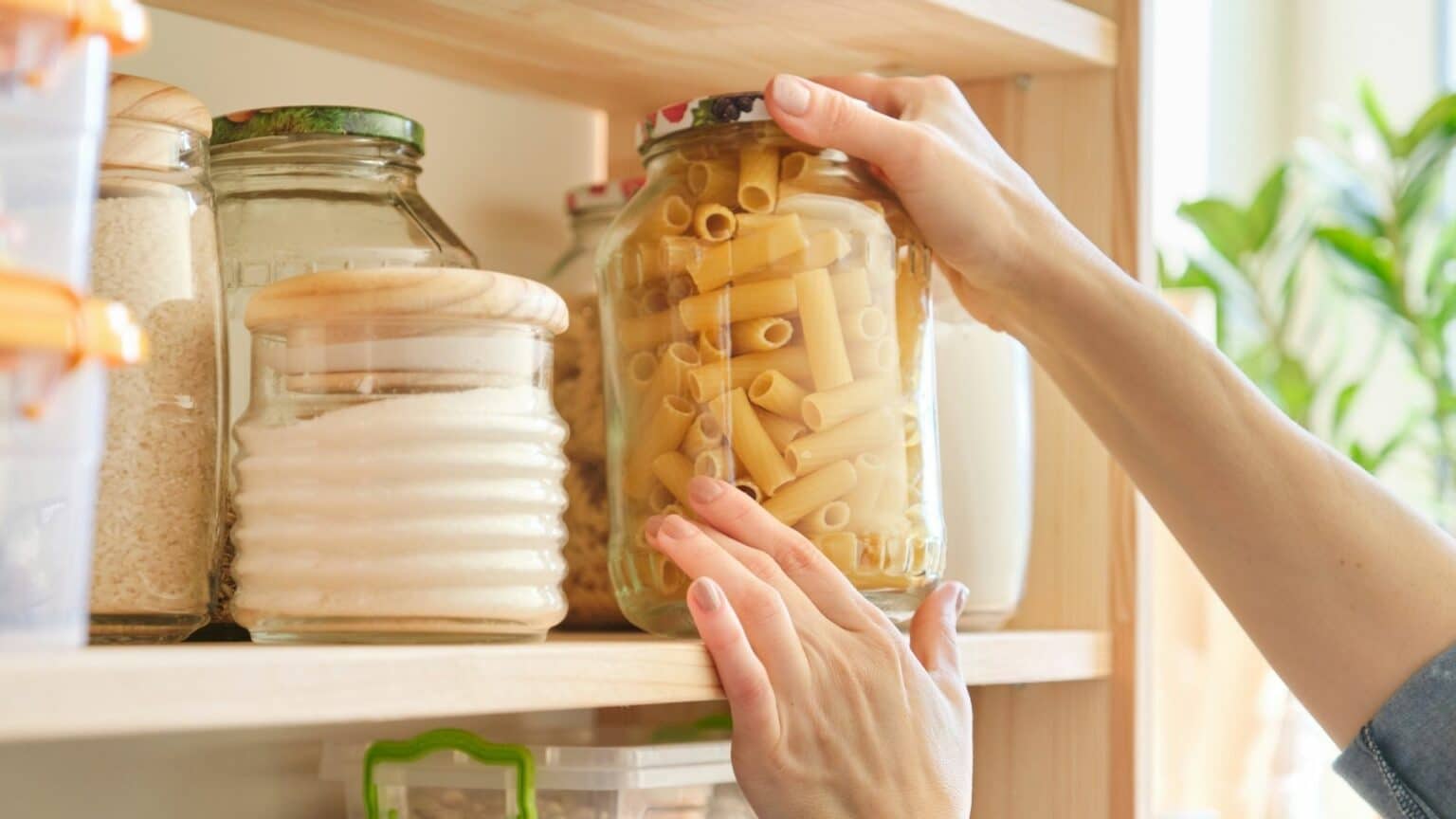
What many people do not know is that plastic bags and packages are not an obstacle for insects. Even cellophane consistently fails against bugs that like to eat pasta. Excessive moisture is the probable cause of this phenomenon. It leads to growth of mold, fungus and mildew which, in turn, attracts insects.
Glass, plastic and metal jars effectively prevent the occurrence of these problems for a variety of foodstuffs and household items. They serve as an excellent storage container for flour, oil, sugar peas and pasta. One of the most common problems in storing pasta is humidity. Humidity levels in kitchens vary, and it’s not completely obvious to notice what effect they have on your products.
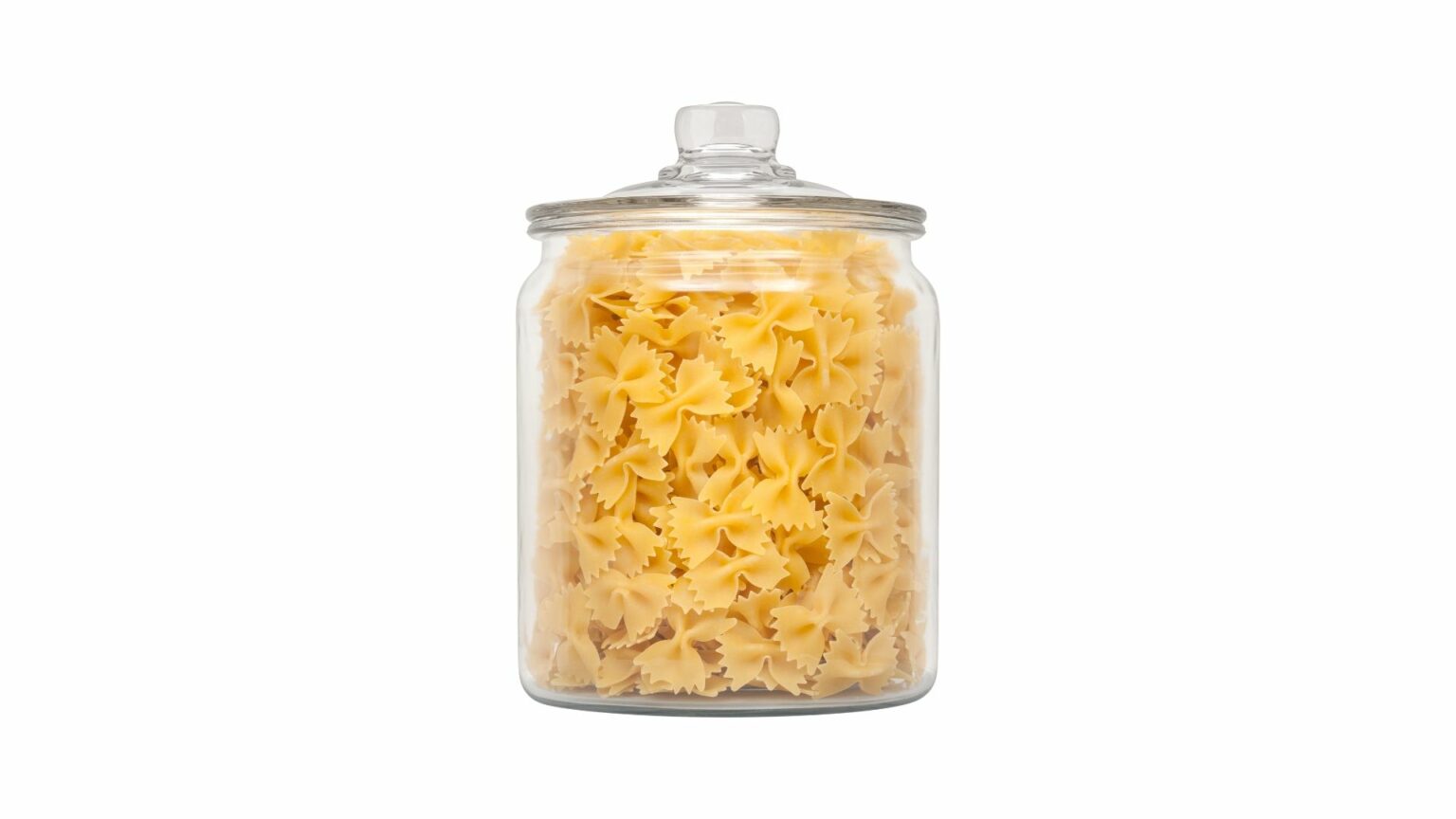
Proper storage of pasta should be done in a dark, dry and well ventilated area. Before storing pasta in an airtight container, one has to remember several things – whether the product is old or not because there are no date labels on pasta packages; whether the packaging is torn or perforated.
Cans help to some extent to avoid the effects of unwanted spikes by helping to keep food longer. The containers make it difficult to accidentally scatter the pasta, they are easy to keep in order and to dispense the right amount. The best containers have ergonomic designs with rounded corners and they are made of sturdy material that can withstand heat and temperature changes.
Types of Containers for Different Types of Pasta

Every food storage container has their upsides and there are many different shapes, sizes, and volumes available on the market. And when it comes to pasta containers in particular, they come in a wide variety of shapes and sizes. The shape of a pasta storage container indicates how much pasta it can hold.
This is important to know because if you’re buying pasta to cook later, you don’t want to store too much pasta in your storage container because it will go bad. If you have leftover pasta you can put some in your storage container and feed your family the next day. The height of a pasta storage container is also important because if it won’t fit in the cabinet where you store your dry food, you need to find another one that is tall enough or fits under the counter.
Some pasta storage containers have ventilation holes so if space is an issue one of those are recommended. It is safe to say, due to the fact that the square containers take up less space, they can be placed vertically and it will be very practical for their use in the kitchen. The peculiarity of the pasta storage container is in its handle – if you grab it from the top shelf of the cabinet, you will not drop it.
Jar for Spaghetti and Long Pasta
There are many ways in which you can organize your jars with spaghetti and other pasta products. The main thing is to convince them to take up less space inside the cupboard, while still protecting the noodles from breaking. This also means that there is a chance of breaking which will leave you with less pasta to cook your favorite recipe tomorrow.
The term “spaghetti” was coined in the year 1500 – according to the “Proceedings of the Royal Society of London” – by a traveler from Naples, Italy. It is a plural form, which indicates that there was at least one type of long pasta product known before. History also shows that this pasta was made with eggs, flour and salt.
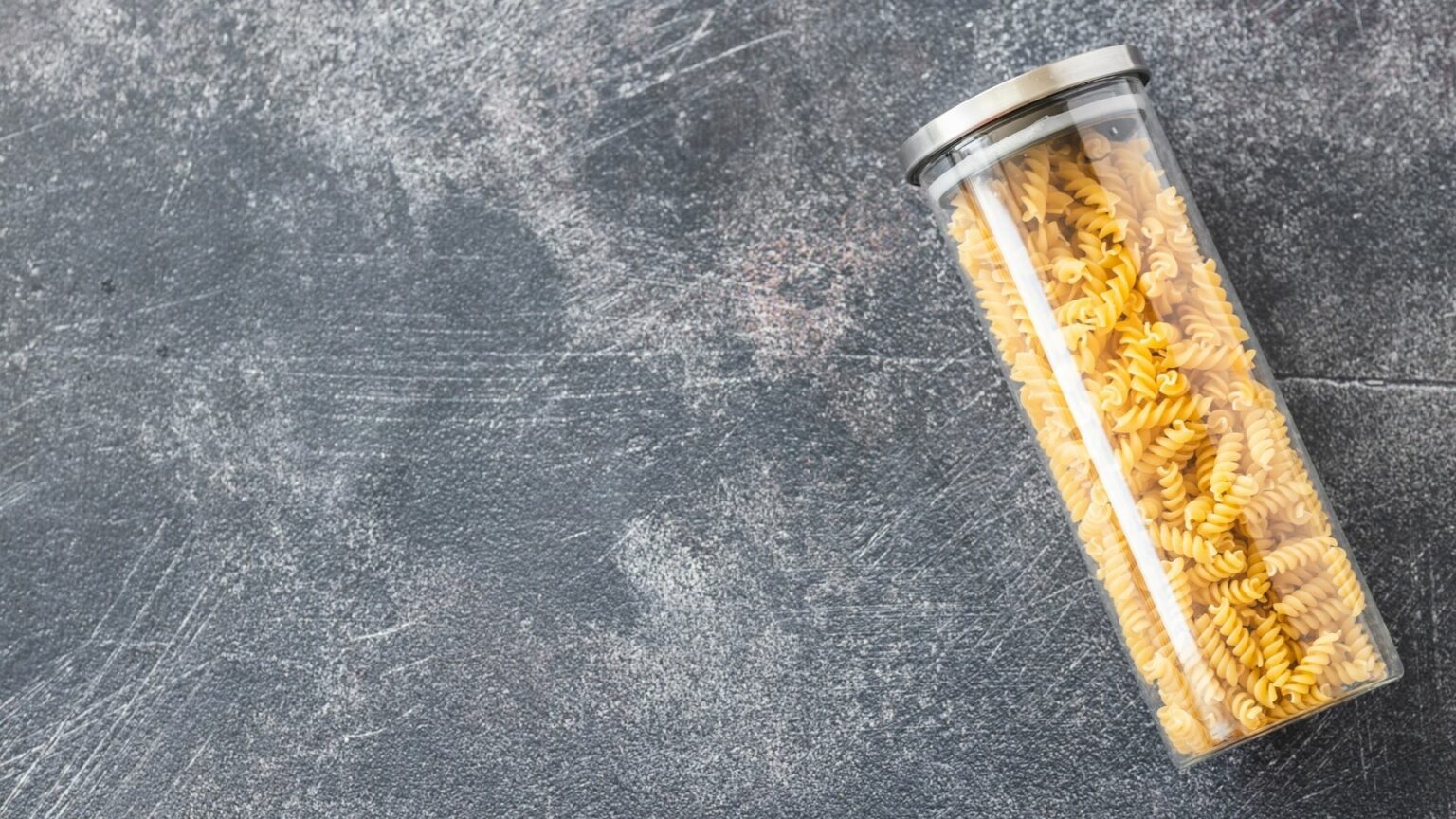
Also, it should be noted that “long pasta products” are also referred to as “penne”, “fusilli”, and “rotelle”. Spaghetti is a particular variety that is hollow in form and may be either long or round. It is widely used in Italian food. Special jars for spaghetti made from glass or plastic are tall and have a flat, round shape.
They may not differ in design but help to organize storage space and keep jars of different food products easily distinguishable. Jar for spaghetti is a different jar with a wide base and extremely high neck due to the size used for storing spaghetti. Running jars have straight rather than curved sides.
They are usually placed on the shelves of cooking cabinets with other long pasta products including macaroni, shells and elbow macaroni. It is not only a very original and convenient packaging, but it is also a great advantage to have the pasta stored vertically. You can take out the amount of pasta you need without even touching the other pieces by just pulling them out.

A new product has entered the market, which recently became very popular. For those who are working in the food industry and is engaged in cooking, it will be a godsend because of the time-saving properties. The lifting mechanism eliminates the need to use hands and other implements for lifting pasta and extraneous movements.
This is facilitated by a special container that has a special piston mechanism. The design of such a device is very modernistic, you can say that this is something that was missing from various kitchens. A portion of fresh spaghetti is easy to extract from the container with a minimal loss of the product due to an innovative lifting mechanism, which is a disk with a long handle.
Works on the principle of a piston. In such a container is convenient to shift pasta, extending the second bottom to the middle. To take a portion of spaghetti, you need to pull the handle-stick up – the contents will rise.
Universal Tins for Shaped Pasta
If you’re the type of pasta lover who likes to collect shaped pasta, then you know that they don’t always fit into a standard food pantry. Rather than trying to cram your tins and boxes into one space, you can use a different tactic. One method is to use jars that are typically used for cereal and other bulk products.
Universal tins for shaped pasta fit all types of pasta, including small noodles, stars and cones. Their advantages lie on the following: they are easy to use, they keep the shape of pasta and do not allow it to adhere to each other. Tanks for loose pasta come in cylindrical, square and rectangular shapes. The most common is the cylindrical, which is the shape of penne.

This shape makes it great for fitting in with spaghetti and fusilli – the traditional Italian pasta shapes. Pasta is one of the most common ingredients found in any Italian kitchen. It can be used as a base for hundreds of recipes, even as a first course before the main dish. Of course, it is not easy to determine how much you need to have on hand at home. Volumes vary.
And here the choice depends not so much on the weight of the pack, but on the shape and size of the products. Not just a jar to store your pasta, it is a really handy tool to have around the kitchen. It is better to have a set of different jars in the same style and for vermicelli, and for huge shells. It looks much more beautiful. For best storage, it is important that the pasta not break.
Leaf lasagna noodles are best stored in square and rectangular containers with the container in a horizontal position. This is because when placed vertically inside the container, the noodles will shrink from the weight and pressure of other products stacked on top of them.
Criteria for Choosing a Pasta Storage Container
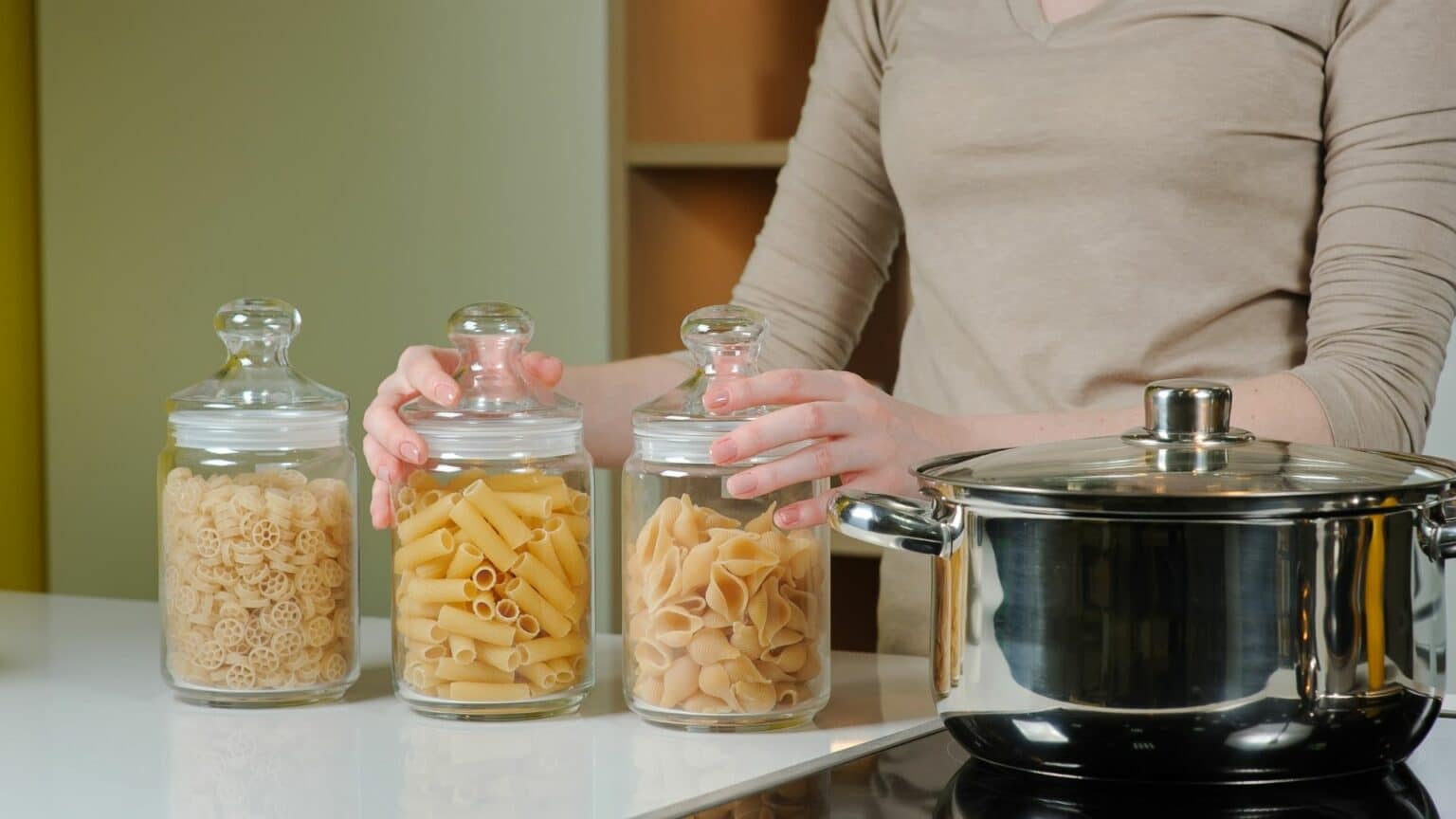
It would seem that everything is simple – choose a jar by shape and go to the cash register. But there are other important factors in addition to volume, which you need to consider when taking your stocking habits as a basis. If the shape does not match, then it may be that the proportion of macaroni will not fit into this jar. In order for your pasta turns out not only great in taste, but also visually, you need to store it correctly and in good condition.
Practical and Hygienic Material
Jars for storing pasta are usually made of glass, ceramic, plastic, and metal. Sometimes they are made of wood, birch bark, and bamboo. One thing you can use to choose a jar is to look at the material it’s made of.
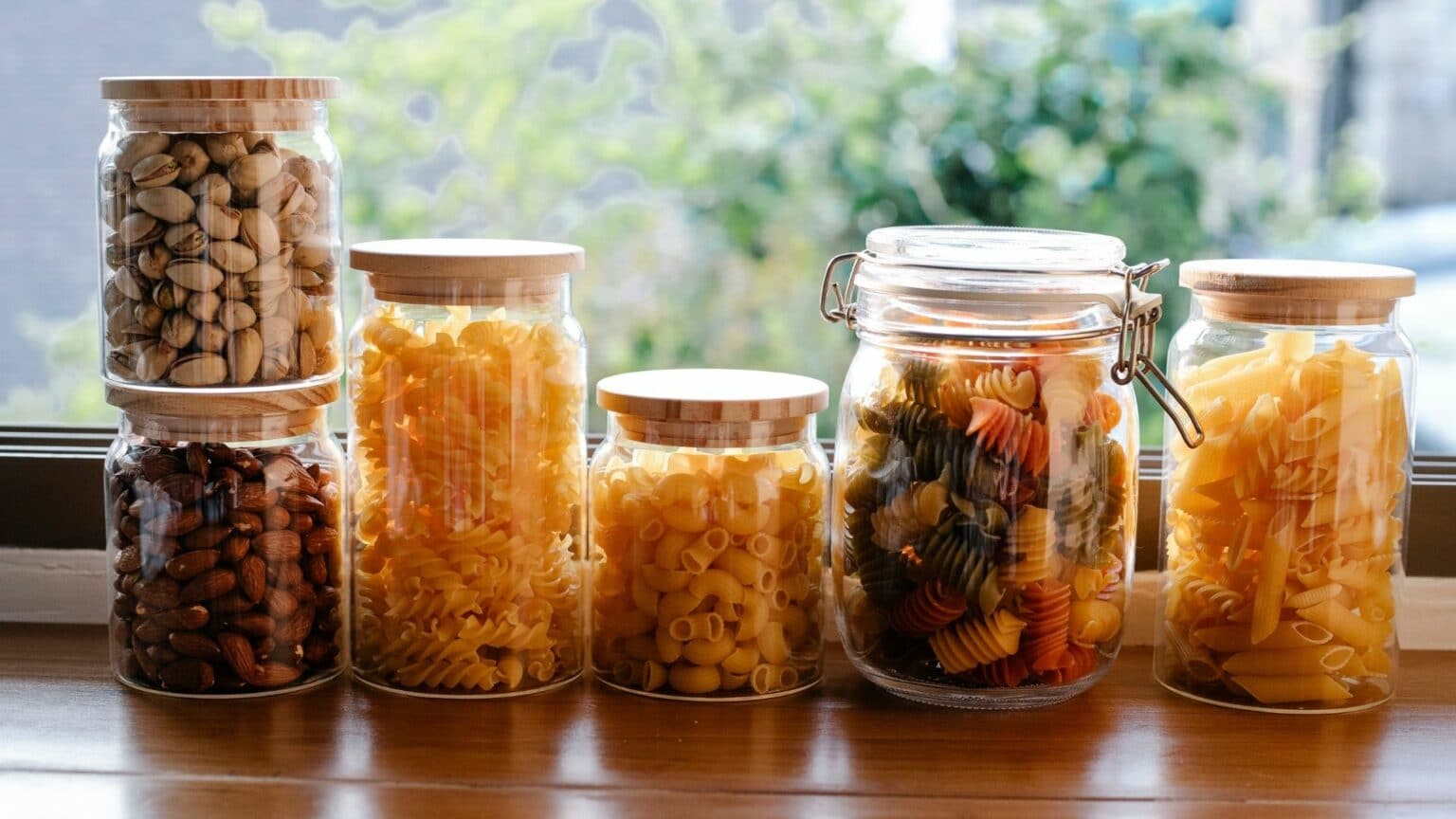
Glass container is essential in my opinion. Everyone knows that glass is an inert material, easy to wash and disinfect, no pores, reliably protects against the penetration of bugs, moths and other pests both inside and outside (if you suddenly bought infected pasta). But its practicality lies not only in this. It’s also right that there are no harmful chemicals that can affect our health.
The following factors may be a disadvantage:
- Spaghetti in glass jars should be stored in a dark place, not too cool or hot. Only this storage will keep the product fresh for a long time.
- These weighty jars are made from a thick glass. A large number of glass jars weighs down a cabinet shelf.
- Glass is a very fragile material, and when it falls from a significant height, it can become quite dangerous. A fall on the floor, especially on the tiled floor, can end up in a pile of splinters.
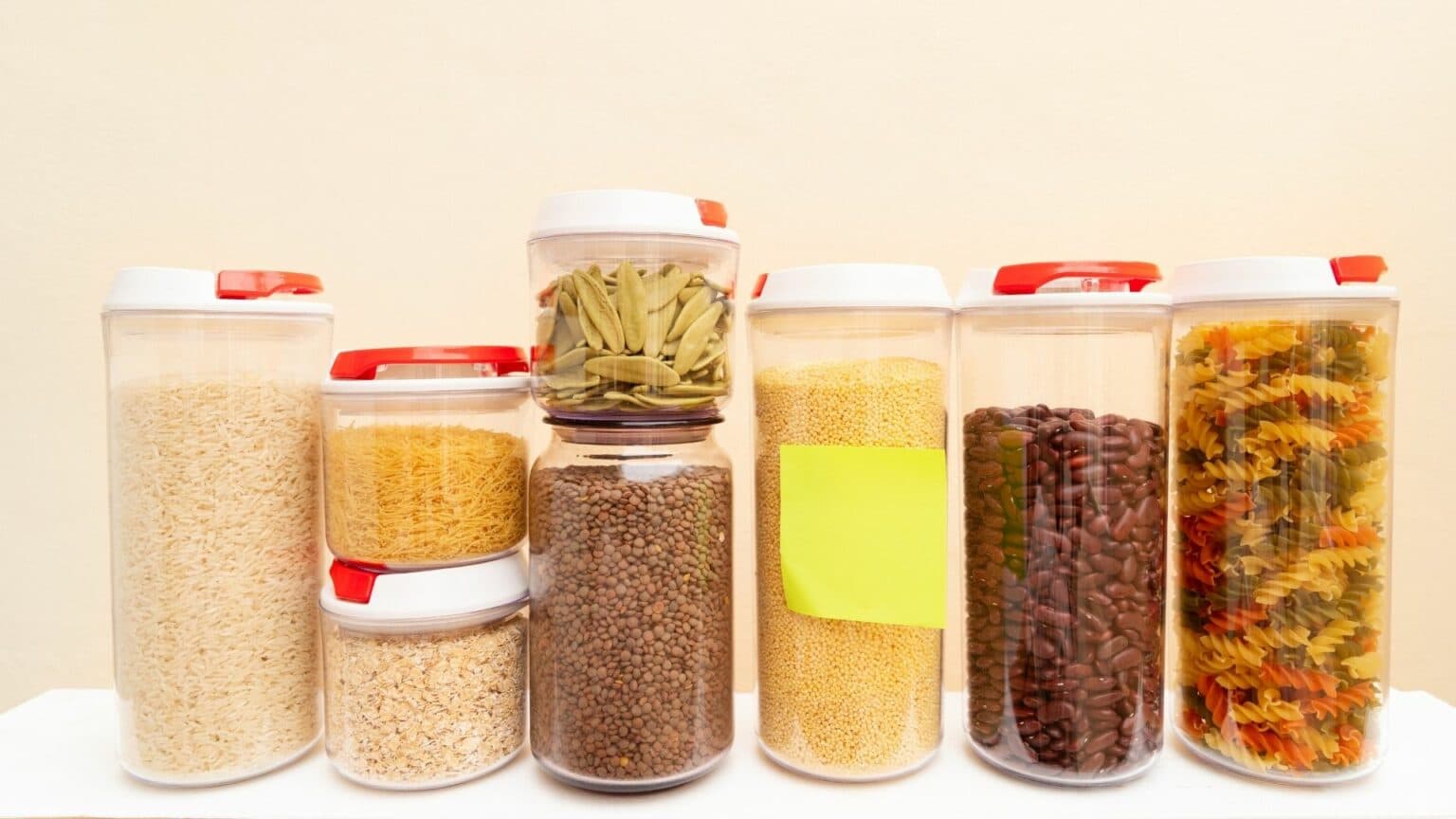
Plastic containers for packing and storing food are used by people very often. One of the most popular in this product segment is storage containers for pasta, cornmeal, and other cereals. It is a lightweight and fairly inexpensive material that is transparent and translucent.
This segment offers the largest selection of pasta containers – there are some that are safe and practical, and some that are better not to buy. Keep the storage of pasta you need, can help the use of plastic utensils for storage. In choosing the appropriate utensil for pasta storage as much crucial as possible to get the label on it.
When using these things, you will make more convenient and do not have to strive too hard to read the writing on it. Choose the right utensil for storage will help labeling. Plastic storage container is a safe material used in making home and kitchen goods. Polypropylene is used for reusable containers for storing food at both room temperature and refrigeration temperatures.
Etched with the number 5, polypropylene can keep pasta fresh without any threat. It signifies that the container is made from polypropylene that is FDA approved for safe food storage. A quality reusable plastic pasta container should be made of polypropylene.
The containers most of us use to store pasta, cereal, flour, sugar, and other household products are usually made from polyethylene terephthalate (PET). It is used to make disposable containers, including bottles, in which some people still store cereal and pasta even though they should not.
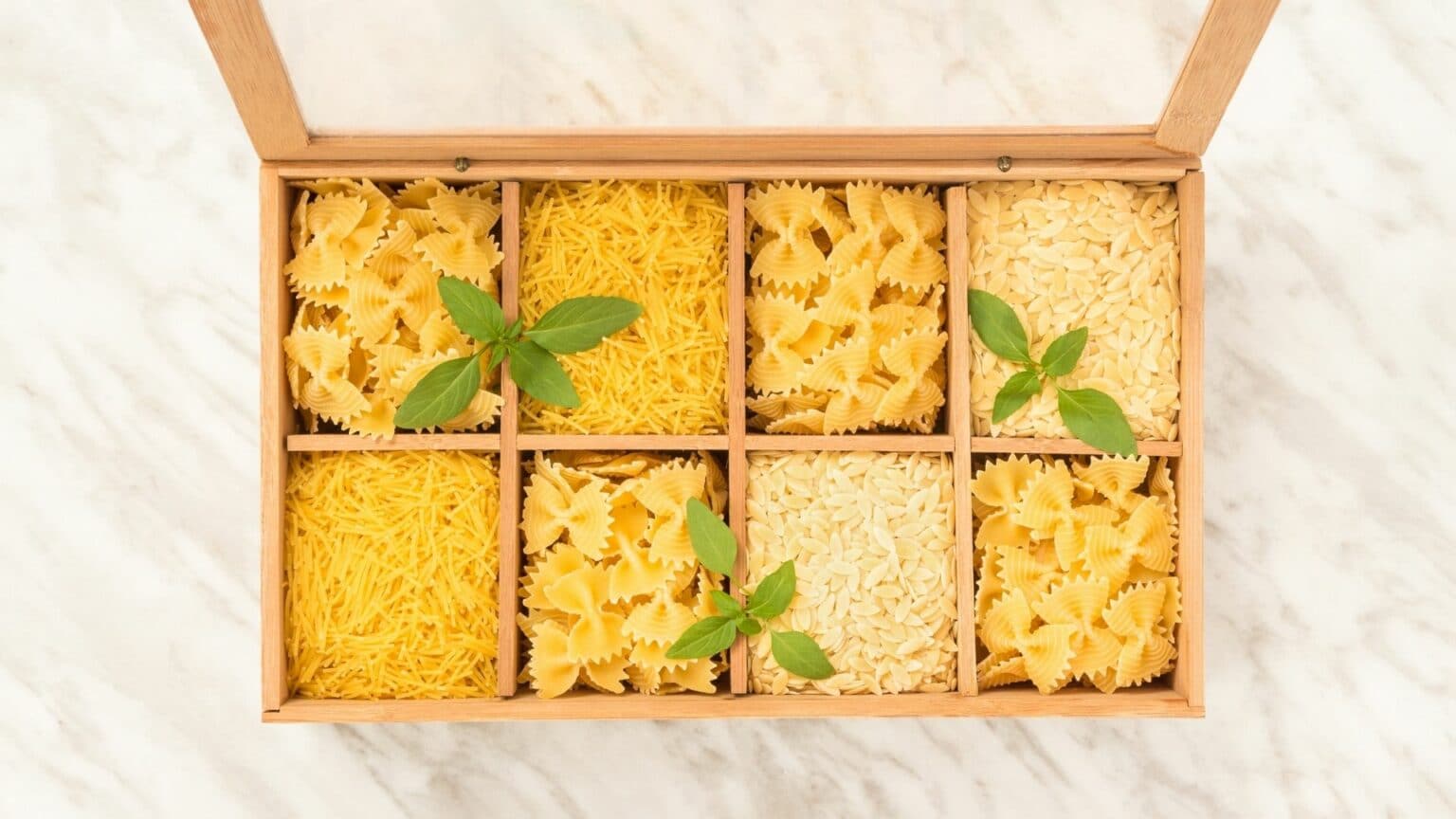
If you love storing your kitchen stuff inside containers, then you will be thrilled with the incredible benefits of using metal containers. Metal containers are very much durable and are made up of stainless steel, which makes them resistant to rust and corrosion. A few years after the introduction of plastic food containers, metal pasta storage containers appeared on the market.
They quickly became popular and manufacturers started producing them in large batches. As you can imagine, they outperformed traditional plastic storage containers and became a rising star of the food storage industry. However, they have one weakness – they heat up and cool down quickly. If the kitchen is small and the oven is running frequently, overheating is unavoidable.
Tin containers can not even be considered, this is yesterday’s day. Pasta is now handcrafted by pasta makers from all over the world. Solid treatments are made to avoid oxidation that makes them last for years. In other words, there is no risk to pasta with age and does not need to be stored in an air-tight container or replace it every year.
It is important to keep spaghetti and other pasta products away from heat sources because it can cause them to spoil faster than usual. Once the pasta has gone past its expiry date or becomes too soft then you need to throw it away as you won’t be able to cook it properly.
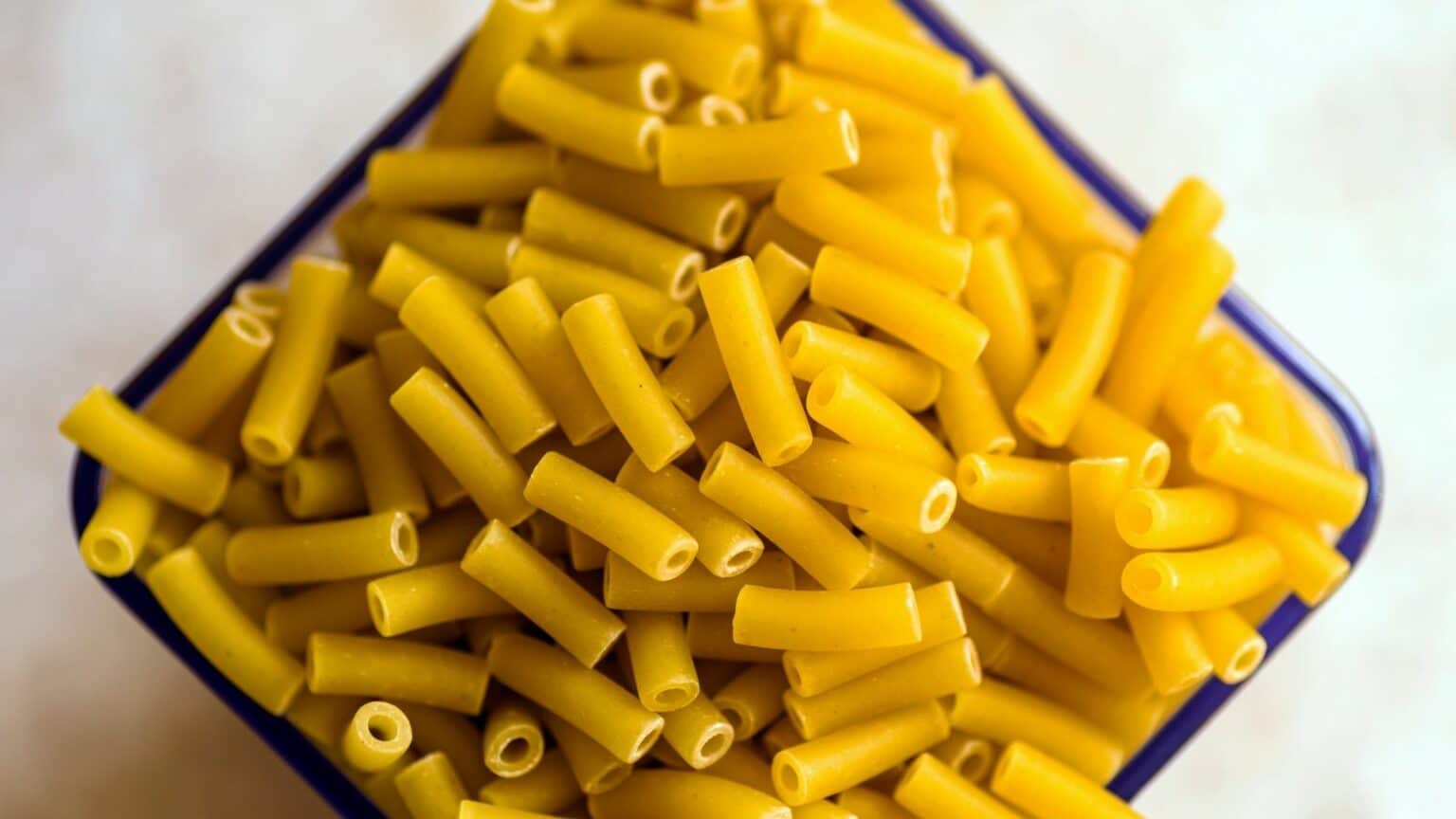
There are many kinds of storage containers for pasta. They include plastic, glass, metal and wood. But if you came here to find out if you should buy a wooden pasta storage container – of which there are quite a few for sale in America – let’s just say that wood is not suitable for the vast majority of pasta storage situations. Although there are some situations where you can use wood (bamboo, birch bark).
The storage of dry pasta and related products is an important issue that has to be approached with caution. The exposure to dust, sunlight and heat can quickly alter their taste, texture and the color which can cause serious losses for those who love this food. And only in dry places where there are no extraneous odors. If the kitchen is large, and you have never seen insects in it, you can take a risk.

Ceramic containers can be used to store pasta, if the inside surface is coated with a glaze. Otherwise, it will likely absorb the taste of the food, and the nutrients will leach out into the air. Ceramic containers are often made from organic materials like clay. When these containers are exposed to water, they absorb it and retain it as moisture in the container.
This makes ceramic useful for storing some types of food in a sealed environment since it prevents them from going stale or dehydrating faster than their natural state. However, you must use ceramic containers for the correct food type and if the inside surface is coated with glaze.
Understanding the role of containers in storing pasta is critical to ensuring that the pasta is kept at its best possible quality. The first thing we need to look at when choosing a container is the glaze. Unglazed ceramics will absorb moisture and release it if the air inside becomes dry. This will cause the pasta to moisten and deteriorate.
So it’s important to choose a ceramic containing food safe glaze, or you can use a non-ceramic container for storing dry pasta. Don’t let your pasta spoil because it got damp. The glazed ceramic containers, which come in numerous shapes and sizes, are similar to glass jars in terms of weight, appearance and transparency.
Lid and Opening Method
Tall, glass jars with a screw-on lid are considered the best containers in which to store pasta. They can be found in many kitchens and often come with the purchase of dried pasta, though they can also be purchased separately.
Their efficiency is largely due to the vented lid, which allows moisture to escape while preventing any residual moisture from entering the jar itself; this is essential for properly storing pasta because it helps keep it from getting stale and blocks out potential insects that might make their home in the nooks and crannies of unsecured containers.
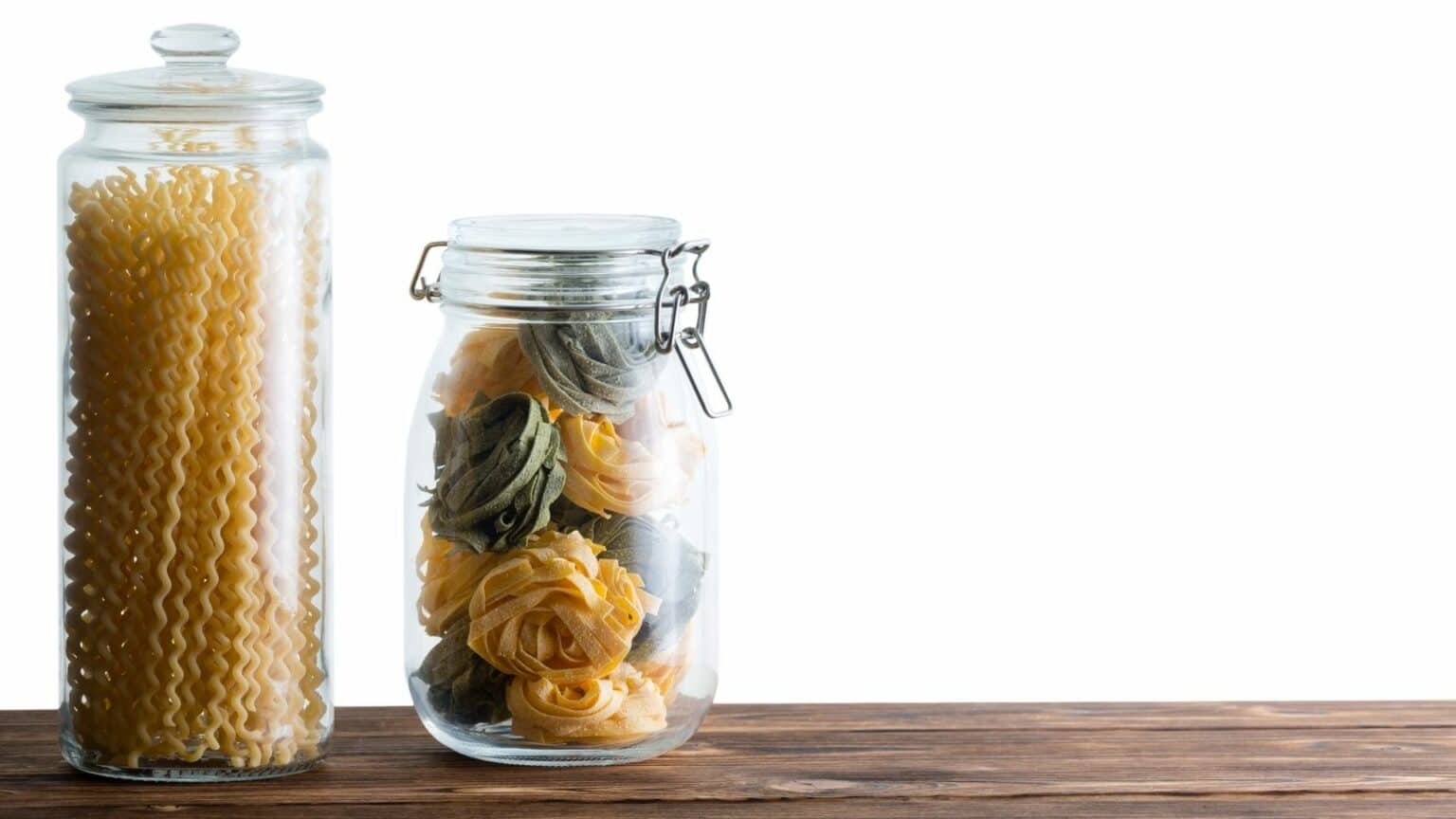
Deciding whether you want to purchase a container that has a lid with a “window” or without such feature is a matter of choosing between convenience and security. The lid of a pasta storage container with an attached window is convenient in that it is completely removable, making the opening wide.
This makes it easier to transfer pasta from the packet. The “window,” in turn, is easy to open. But it is important that it fits tightly, leaving no chance for pests to crawl inside. Various types of pastas are kept fresh in this easy and fashionable container. In keeping with the needs of the individual consumer, there is a plethora of different styles and sizes to meet their tastes.
Large serving of pasta is usually enough for 4 people. If you happen to have leftovers or are trying to get a whole family fed, you might want to invest in one of these clever storage containers. The storage containers with a dispenser function store the pasta inside, while the lid discharges only one serving when pushed down.
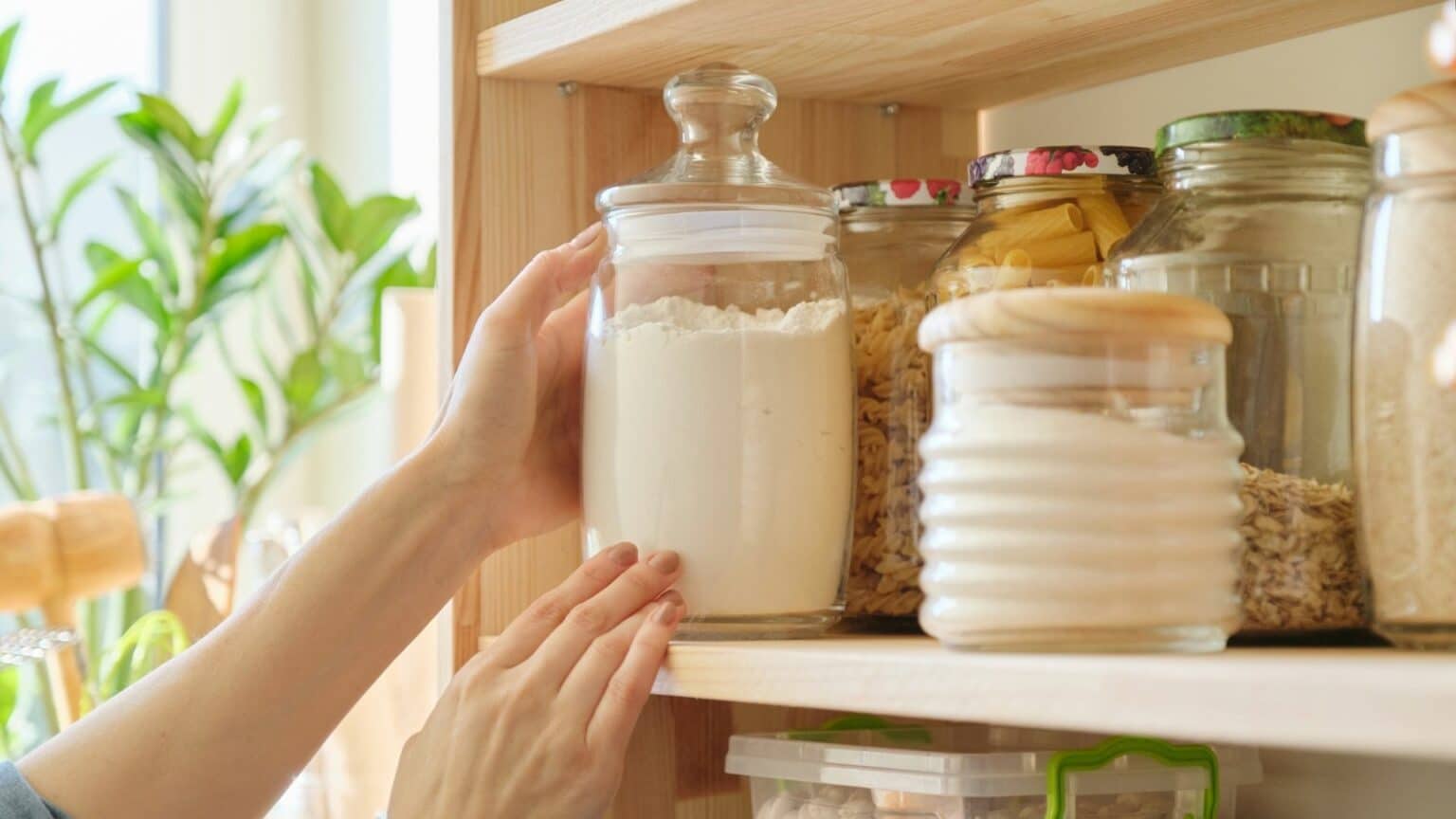
This helps to save space in the refrigerator and makes it easy to control portions. Various sizes are available, but all the lids are designed with variable-sized perforations around the periphery which can be set according to the number of servings you plan to prepare. The importance of the right kind of food storage containers is self-explanatory.
It is very important to look for the right kind of food storage containers with its lids that close like stoppers. The silicone seals create a reliable insulation of the contents from external factors. At the same time they can be opened and closed easily. They can be supplemented with measuring notches, making them perfect for dry pasta.
In regards to the best hinged lid containers, they snap on with a tight lock leaving no room for an air leak. So if you are looking for something that is air-tight, this is exactly what you want. However, they take time to open and close. The swinging of hinged lid can smash food. So, if you are in a hurry then this type of lid can get out of hand.

When choosing bulk containers for food storage, there are some factors you need to consider. In the case of salt containers and coffee cans, it is a good idea to choose different containers due to the conditions required for each product. Also note that you need to measure the height of the shelf where you plan to put the jar of spaghetti, so it does not turn out that it will not fit in the planned place.
Recommended Articles :
Copyright 2024 © Beyond the Embrace
Beyondtheembrace.com is a participant in the Amazon Services LLC Associates Program, an affiliate advertising program designed to provide a means for sites to earn advertising fees by advertising and linking to Amazon.com.


